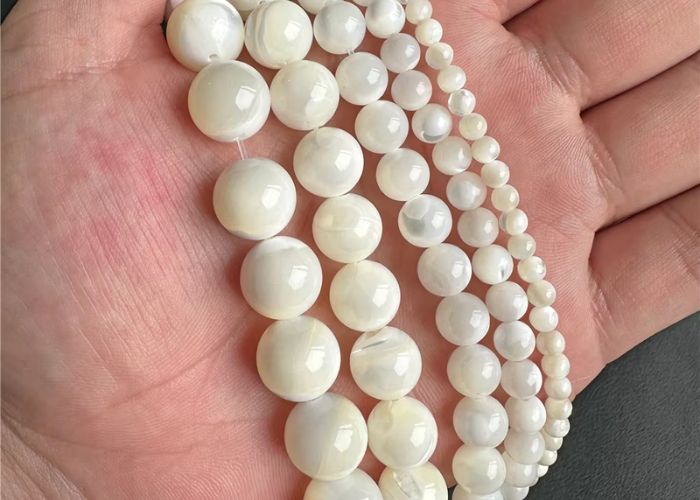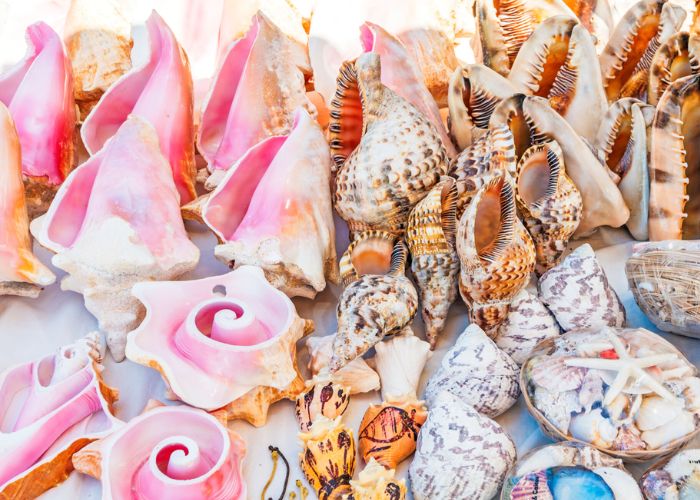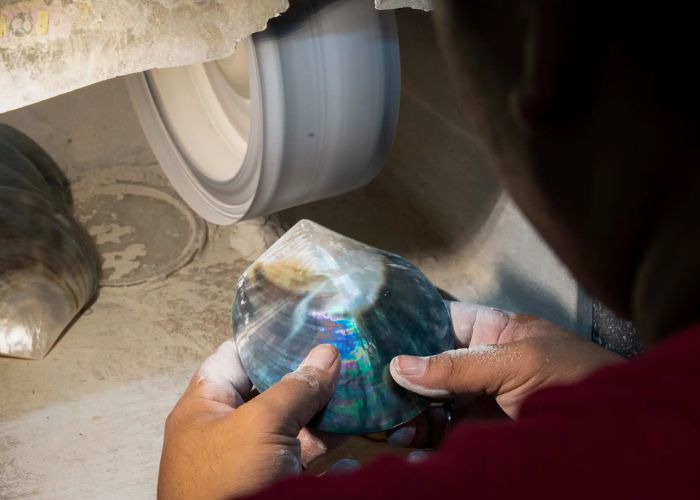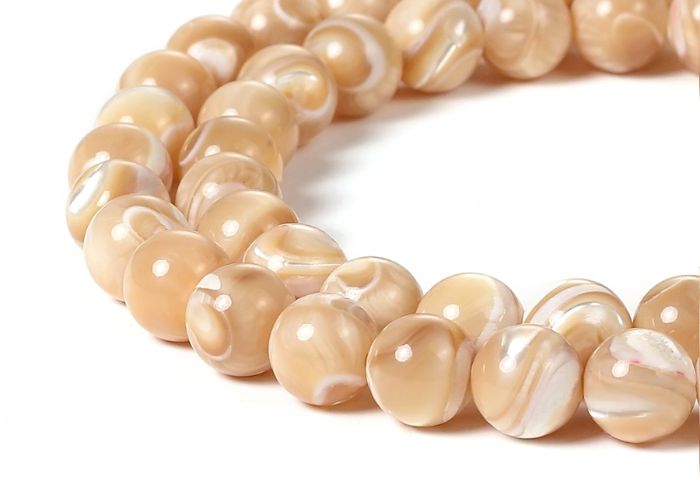Mother of pearl beads are not only stunning but also carry a rich history of craftsmanship. Many people admire their iridescent beauty and unique patterns, but few understand the intricate process behind their creation. In this exploration of how are mother of pearl beads made?. We will delve into the steps involved in transforming mollusk shells into these exquisite decorative pieces, highlighting the care and skill required at each stage.
Contents [hide]
1. What is a mother of pearl beads?
A Mother of Pearl bead is a decorative bead made from the inner shell layer of certain mollusks, particularly oysters and abalones. Known for its iridescent sheen, Mother of Pearl displays a range of colors, from white and cream to pink, blue, and black, depending on the type of shell. These beads are prized in jewelry making and crafts for their unique beauty and luster.

Mother of Pearl beads are lightweight and versatile, making them suitable for various designs, from elegant necklaces to casual bracelets. They are often used to convey a sense of calm and tranquility, as well as to enhance emotional balance. Additionally, Mother of Pearl is associated with cultural significance, representing prosperity and good luck in many traditions. Overall, these beads combine aesthetic appeal with meaningful symbolism, making them a popular choice among artisans and jewelry enthusiasts alike.
2. How are mother of pearl beads made?
Mother of pearl beads are cherished for their unique beauty and iridescence, making them popular in jewelry and crafts. The process of creating these exquisite beads involves careful selection of materials and several meticulous steps.
Materials:
The primary material for mother of pearl beads is the nacre layer found within the shells of mollusks, such as oysters and abalones. These shells are chosen for their lustrous quality and vibrant colors. When selecting shells, artisans look for those with minimal blemishes and optimal thickness to ensure durability. Additionally, tools such as saws, drills, and polishing equipment are necessary to shape and finish the beads.
Step by Step Process:
Step 1: Sourcing the Shells
High-quality mollusk shells are sourced from sustainable fisheries. The selection process focuses on obtaining shells with rich nacre and unique patterns.

Step 2: Cleaning
The shells are thoroughly cleaned to remove any dirt, debris, or organic material. This step is crucial to ensure a smooth surface for further processing.
Step 3: Cutting
The cleaned shells are sliced into thin sheets using specialized saws. This allows artisans to access the nacre layer that will be transformed into beads.

Step 4: Shaping
The thin nacre sheets are then cut into various shapes, typically round or oval, depending on the desired bead style. This step requires precision to maintain uniformity in size and shape.
Step 5: Drilling
Holes are carefully drilled into each bead to allow for stringing. This process must be done delicately to avoid cracking the nacre.
Step 6: Sanding and Polishing
The beads are then sanded to smooth any rough edges and polished to enhance their shine. This step is vital for achieving the characteristic luster of mother of pearl.
Step 7: Quality Control
Each bead is inspected for flaws and uniformity. Only those meeting high standards are sorted and prepared for sale.

Step 7: Final Products
Once completed, mother of pearl beads are ready to be used in jewelry making, craft projects, or as decorative elements.
In summary, the creation of mother of pearl beads is a detailed process that requires skill and attention to detail. From sourcing the materials to the final polishing, each step contributes to the unique beauty and quality of these beloved beads.
3. How to store Mother of Pearl Beads
Proper storage is essential for maintaining the beauty and integrity of mother of pearl beads. Due to their delicate nature, these beads require special care to prevent damage, scratches, and dullness. Here are some effective tips on how to store mother of pearl beads:
- Use Soft Pouches or Cases: Store mother of pearl beads in soft fabric pouches or cushioned jewelry cases. This prevents them from coming into contact with hard surfaces that could scratch their iridescent surface. Avoid plastic bags, as they can trap moisture and lead to tarnishing.
- Separate from Other Jewelry: Keep mother of pearl beads separate from other jewelry items, especially those made from metal or gemstones. This reduces the risk of scratches or abrasions caused by contact with harder materials.
- Control Humidity and Temperature: Store beads in a cool, dry place away from direct sunlight and extreme temperatures. Excessive heat or humidity can cause the nacre to deteriorate or become discolored. A controlled environment helps preserve their natural beauty.
- Avoid Chemical Exposure: Keep mother of pearl beads away from chemicals, including perfumes, lotions, and cleaning products. These substances can damage the surface of the beads. Always handle them with clean, dry hands to avoid transferring oils or residues.
- Regular Inspection: Periodically check your stored beads for any signs of damage or wear. This allows you to address any issues early, ensuring that your mother of pearl beads remain in excellent condition.
- Organize by Size and Color: If you have a collection of mother of pearl beads, consider organizing them by size and color in your storage container. This not only makes it easier to find specific beads but also helps prevent them from clashing against each other.
By following these storage guidelines, you can help ensure that your mother of pearl beads remain beautiful and vibrant for years to come, ready to be used in your next jewelry or craft project.
4. FAQs
4.1 Are Mother of Pearl Beads cheap or expensive?
Mother of Pearl beads can vary in price, ranging from cheap to moderately expensive depending on factors like quality, size, and craftsmanship. More affordable options are often mass-produced, smaller, or may have imperfections. However, higher-quality beads with larger sizes, unique color variations, and excellent craftsmanship can be more expensive. While generally less costly than precious gemstones, the price of Mother of Pearl beads will ultimately depend on their specific characteristics.
4.2 What color Mother of Pearl Beads is most expensive?
The most expensive Mother of Pearl beads are typically those that exhibit rare and unique colors. While the standard Mother of Pearl has an iridescent white or creamy hue, beads with shades of pink, blue, or black are often considered more valuable due to their rarity. For example, black Mother of Pearl, which is harvested from black-lipped oysters, tends to be more expensive because of its distinct and rare coloration. Similarly, vibrant pinks or blues can also command higher prices, especially when the color is naturally occurring and not artificially enhanced.
4.3 What is the significance of wearing mother of pearl?
Wearing Mother of Pearl holds both symbolic and cultural significance. It is often associated with calmness, protection, and emotional balance, believed to bring inner peace and relieve stress. Many people wear Mother of Pearl for its soothing energy, which is thought to enhance intuition and sensitivity while promoting harmonious relationships. In some cultures, it is also seen as a symbol of prosperity, purity, and good luck. The iridescent beauty of Mother of Pearl makes it not only a fashionable accessory but also a meaningful one, representing the nurturing power of the sea.
If you have any further questions, don’t hesitate to send thanhcongcraft an email us at info@thanhcongcraft.com or message us at WhatsApp: +84967485411. Hope to serve you soon! Best regard!


